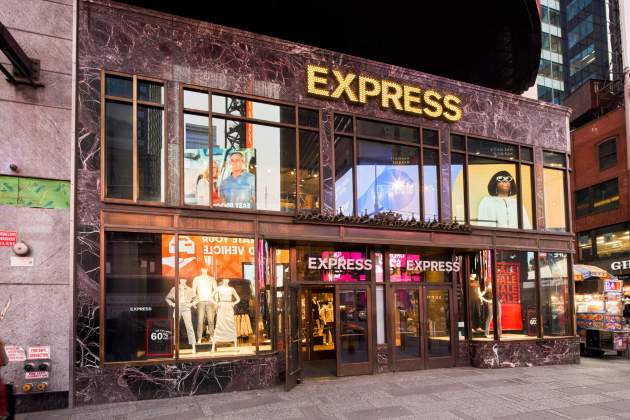What Retailers Can Learn From Express’ Trip Through Bankruptcy

After a long decline and a quick trip through bankruptcy, Express is back on its feet.
The retailer closed on its deal to exit bankruptcy on Monday, ending a three-month stay in Chapter 11. The business is now owned by Phoenix Retail, a joint venture owned by brand management firm WHP Global, which already had a controlling stake in the brand name, and mall owners Simon Property Group and Brookfield Properties.
More from WWD
When the $174 million deal was approved by the court this month, Yehuda Shmidman, chairman and chief executive officer of WHP Global, said it would save 7,000 jobs and 450 stores.
Ian Fredericks, president and chief operating officer of Hilco Consumer — Retail, had a front row seat to the often painful chapter that Express just ended, and said it offers lessons for other fashion companies navigating a tricky consumer landscape.
Hilco is perhaps best known for its business helping stores liquidate, but it offers a range of services that has it involved in the nitty gritty details that can make or break retail.
In 2017, Hilco was hired to wind down Express’ Canadian retail business, which included 15 to 20 stores.
Fredericks said the liquidation sales were “off the charts” successful.
“The Canadian consumer actually really liked Express,” he said. “They didn’t want Express to go away. The problem was they didn’t execute well, they didn’t treat that consumer appropriately in stores. Whatever they were doing, the consumer didn’t want to shop in their stores.”
On another assignment — focusing on Express’ clearance problem in Puerto Rico — Fredericks said the company’s “poor internal controls around allocation” were clear as the stores were stocking winter jackets, carrying the same mix as cold-weather stores.
“If you’re going to be successful in retail, you have to execute in your stores really well,” Fredericks said. “And what we proved over the years with Express was that they didn’t execute really well in their stores.”
Express isn’t alone.
Fredericks said that while e-commerce’s pandemic max had it accounting for only 25 percent of sales, retailers have had the investment equation backward and have funneled 75 percent of their investment dollars to the online business.
“They’ve overinvested in other areas [like e-commerce] and accessed the capital markets when they were frothy to invest in those other areas,” Fredericks said. “Now that they need to invest in stores, they don’t necessarily have the capital to do it.”
And they often don’t have the talent either.
“The reality is as new people are entering into the retail labor force, they’re not wanting to work in stores,” Fredericks said. “You had massive labor shortages in stores and at the corporate level, you’re just not attracting talented people into that side. So everything makes it difficult for retailers to have success in stores, but yet that’s where they really need to have success.”
Fredericks said there are more opportunities for retailers to use technology to help manage stores and specialized teams to help stores that have gone astray.
“People look at liquidation firms — that’s one component of our business — and they’re like, ‘Great, you’re really good at liquidations, but we’re really good at executing retail. We don’t need your advice.’
“The reality is, I’ve seen more businesses fail than anybody in any of those retailers,” Fredericks said. “There’s a massive commonality in the reasons why they fail.”
One key area is in the store operations structure, which in the traditional structure goes from store manager to district manager to regional manager on up to a head of stores and the chief operating officer and chief executive officer.
“Express had around somewhere between 15 and 20 districts,” Fredericks said. “It is hard enough to find two or three really good district managers. And if you’re at all in distress, you’re going to lose really good ones to other chains. The reality is there’s no way that you’re finding 20 to 30 good district managers. And they don’t leverage technology to get into stores.
“The reality is you should really collapse the vast majority of that mid to junior corporate management,” he said. “And you can do that with technology and the technology’s inexpensive.
“Those store teams are understaffed and they need help,” he said. “You take three-person SWAT teams, you don’t need that full district management thing, create these SWAT teams of really good people, and you send them out where you need help in the districts and you train up those people. That’s a way to actually fix the model. That’s a big shift in how retail runs.”
Best of WWD

 Yahoo Finance
Yahoo Finance 